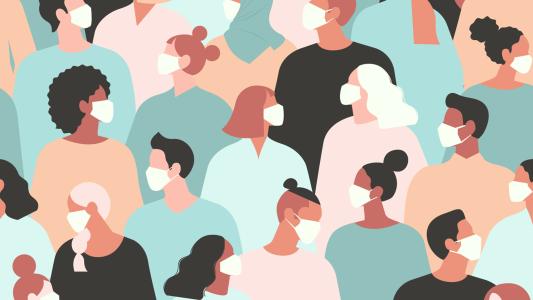Our understanding of the novel coronavirus is advancing rapidly — seemingly every day, scientists are delivering new insights into how it spreads and how we might be able to treat or prevent infections.
But the answer to one question continues to elude everyone: Where did the coronavirus come from?
Some have speculated that the virus jumped from bats to humans via China’s wet markets. Others have pushed the conspiracy theory that it was created in a lab.
Now, a team of U.S. scientists has made a major breakthrough in the case of the coronavirus’s origin — one that could help in the fight against COVID-19.
So, Where Did the Coronavirus Come From?
The virus that causes COVID-19, SARS-CoV-2, is one of many coronaviruses, and not every coronavirus can infect every species. However, a coronavirus that starts in one species can evolve in ways that allow it to infect others.
According to a new study published in the journal Science Advances, that’s what happened with SARS-CoV-2 — only instead of evolving from just one species, it evolved from two before infecting humans.
SARS-CoV-2 has a rich evolutionary history.
Elena Giorgi
The study is the work of scientists from Duke University, Los Alamos National Laboratory, the University of Texas at El Paso, and New York University. They set out to identify the novel coronavirus’s origin by comparing its genome to the genomes of 43 other coronaviruses.
Through that analysis, they discovered that SARS-CoV-2’s closest genetic relative is a coronavirus that infects bats. That bat virus can’t easily infect humans, though, because its spike protein — the tool it uses to break into cells — lacks a key piece of genetic material needed for the task.
Meanwhile, the coronaviruses that infect pangolins (a.k.a. scaly anteaters) aren’t very similar to SARS-CoV-2 — but they do contain that key piece of the spike protein.
The researchers’ conclusion? SARS-CoV-2 evolved from both bat and pangolin coronaviruses.
“In our study, we demonstrated that indeed SARS-CoV-2 has a rich evolutionary history that included a reshuffling of genetic material between bat and pangolin coronavirus before it acquired its ability to jump to humans,” researcher Elena Giorgi said in a news release.
Using the Coronavirus’s Origin to our Advantage
This path to humans isn’t unusual for a coronavirus — the original SARS virus started in bats, then moved into civets before infecting people, while MERS went from bats to camels to humans.
Coronaviruses turn out to be very good at picking up new abilities like this, because if two different coronaviruses infect the same cell at the same time, they can easily swap or recombine their genes, which is perhaps how a pangolin spike protein ended up on a horseshoe bat virus.
Prior to the publication of this study, other researchers had already speculated that the pangolin was serving as a middleman of sorts between bats and humans in the transmission of SARS-CoV-2.
Now that we have evidence that bats and pangolins are likely key players in the coronavirus’s origin story, officials can crack down on their sale to ensure the virus doesn’t continue to infect new people.
We’d love to hear from you! If you have a comment about this article or if you have a tip for a future Freethink story, please email us at [email protected].






